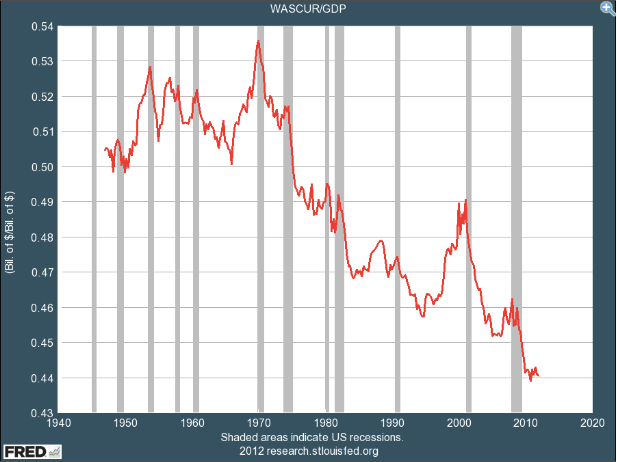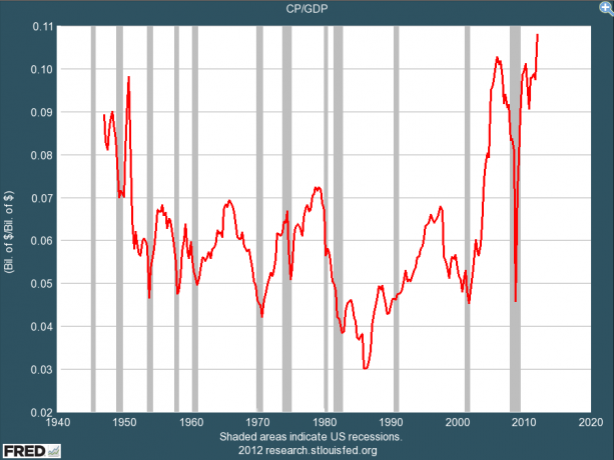These two graphs go a long way toward explaining why the U.S. economy is still in the doldrums.
1) Wages, as a share of economic activity (GDP) have never been lower:

Corporations are paying employees less than ever before, as a share of GDP (Business Insider)
2) While corporate profits (as a share of GDP) have never been higher:

Corporations are making more per dollar of sales than ever before, as a share of GDP (Business Insider)
High profits are sweet nectar, but when workers are paid too little, people don’t have money to spend, and businesses lose their revenue stream. That’s particularly hard on small businesses that typically don’t have millions (or billions) in cash reserves on hand, like big corporations do.

When profits are too high, and wages too low, the economy works about as well as this teeter-totter.
For a time, it’s possible to make up the gap with cheap imports and lots of consumer borrowing, but in the end those aren’t sustainable trends. It’s the movement of money – not the accumulation of it – that makes our economy function. And while money does move from corporate profits into shareholder’s pockets, that process doesn’t create nearly the kind of broad consumer demand you get when you build a prosperous middle class with good wages and benefits.
If state and national policymakers are serious about putting our economy back on track, putting more money back in the hands of consumers is a vital step forward. Raising the minimum wage (for starters) would be an effective and efficient way to do just that.
More To Read
May 19, 2025
A year of reflections, a path forward
Read EOI Executive Director's 2025 Changemaker Dinner speech
March 24, 2025
Remembering former Washington State House Speaker Frank Chopp
Rep. Chopp was Washington state’s longest-serving Speaker of the House
February 11, 2025
The rising cost of health care is unsustainable and out of control
We have solutions that put people over profits
